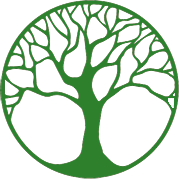Transcript of an Interview with Omar Hamouda on Social Ontology and Monetary Theory - by John Smithin
- Log in to post comments
Omar Hamouda Transcript
JOHN:
Hello, my name is John Smithin, and I’m the research director of the Aurora Philosophy
Institute here in Aurora, Ontario, Canada. With me today in my long-time friend, colleague,
and co-author, Professor Omar Hamouda. Omar is Professor Emeritus of Economics at
Glendon College, York University, Toronto, and is the editor of the Journal of Income
Distribution. Welcome Omar.
OMAR:
Response.
JOHN:
I think we are planning to do a series of 3 videos in total. Today we are going to talk about
the nature of money (what a philosopher would call the ontology of money), and the
implications that this has for monetary theory and macroeconomics. Later, I think we will
have a session on your forthcoming book, A Likely Story. Finally, we will do a ‘historical’
video, you might call it, on the three famous monetary theorists, Keynes, Hayek and
Wicksell. So, Omar, would you like to tell us a bit about why you are interested in these topics. For
example, what is your book is about, and so forth?
OMAR:
Response.
JOHN:
Well, you and I have been talking about these things for a very long time - nearly 50 years, in
fact. I don’t know if you recall, but on September 01, 1975, you and I were both on the same
flight from Paris (Paree), Charles de Gaulle Airport, to Kennedy Airport, New York City. We
jointly discovered America, so to speak, at the same time. We did not know each other
then, but that was rectified very shortly afterwards. And we have been discussing money
and macroeconomics ever since. It is good to have your current thoughts.
OMAR:
Response.
JOHN:
In a book I wrote maybe 12 years ago, I talked about the ‘recurring debates in monetary
economics’. I identified 5 of these debates. I should probably just list what these are, and
then we can talk about each of them in turn.
OMAR:
Response.
JOHN:
1. The debate about the ontology of money (which I think is all important).
2. How does money get into the economy? How is it created and destroyed?
3. What is the main monetary policy instrument that can be used to determine the pace of
money and credit creation?
4. What determines the (real) rate of interest on loans of money?
5. How do monetary changes (interest rate changes, to anticipate what I think we are going
to say later) affect other economic variables?
JOHN:
So, let’s start with social ontology.
What is money? What is its nature? Is money a medium of exchange, which originated with
barter - as conventional economic theory would have it? Or is it a means of payment of
debt, a ‘social relation’ of indebtedness, as Geoff Ingham and others have argued?
OMAR:
Response.
JOHN:
OK. Thanks. So, how does money get into the economy in the first place? I think that here
we are talking about endogenous versus exogenous money, the monetary circuit, the role
of the banking system, credit creation, and so on.
OMAR:
Response.
JOHN:
What is the main monetary policy instrument? The choices here are probably changes in
the nominal policy rate of interest of the central bank versus direct control (somehow, I am
not sure how this could actually be done) of the rate of growth of the monetary base. This is
what the old-time monetarists, such as Milton Friedman, would have argued.
OMAR:
Response.
JOHN:
The fourth debate is about what ultimately determines the real rate of interest on loans of
money. My late colleague, Professor Meyer Burstein, of the Economics Department at York
University, used to say that John Maynard Keynes had ‘a monetary theory of the real rate of
interest’. Meyer was your colleague too, of course, same University different campuses.
Anyhow what do you think of that?
OMAR:
Response
JOHN:
Finally, how do interest rate changes affect other economic variables? We used to talk
about monetary ‘neutrality’ versus ‘non-neutrality’. Is money neutral or non-neutral? And
does this apply, only in the so-called short-run, or in the long-run also? By the way, on this
topic Keynes famously said that ‘in the long-run we are all dead’. Not so sure about that
myself. Here we are – already well into the long-run – and you are I at least are still alive and
kicking (knock on wood).
OMAR:
Response.
JOHN:
Well, thank you very much, Omar. I've learned a lot today. Eh bien, a la prochaine, dans l'avenir nous parlerons de to nouvel live.
OMAR:
Response.
